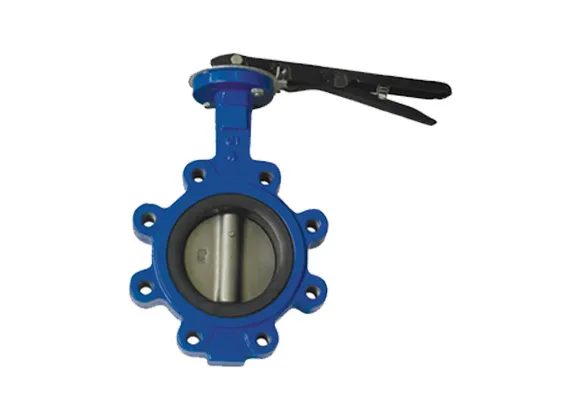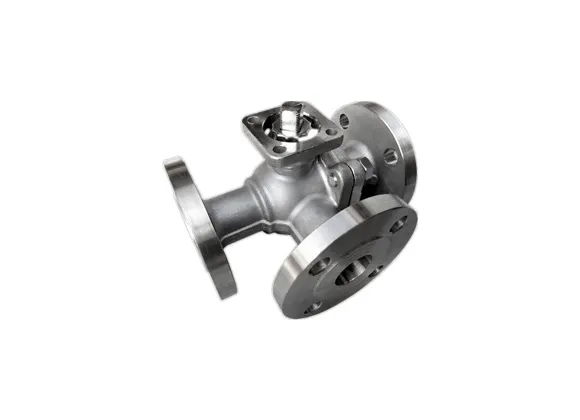Jun . 06, 2025 08:08

(butterfly valves for steam service)
Industrial steam systems demand specialized flow control solutions that withstand extreme conditions. Butterfly valves engineered for steam service provide essential isolation and regulation in power generation, chemical processing, and HVAC applications. Unlike standard valves, steam-rated butterfly valves incorporate reinforced seating materials, precision-machined discs, and specialized stem seals to handle temperatures up to 750°F (399°C) and pressures exceeding 250 PSI. These valves maintain structural integrity during thermal cycling – a crucial advantage where metal components experience constant expansion and contraction.
Three distinctive configurations dominate steam applications: concentric, double-offset, and triple-offset designs. Concentric models with resilient seats serve low-pressure steam lines below 250°F, while metal-seated double/triple-offset valves become essential above 450°F. Full bore service valve configurations eliminate flow restrictions through unobstructed pathways, reducing pressure drops by approximately 17% compared to standard port designs – critical for maintaining system efficiency. Material selection proves paramount; ASTM A351 CF8M stainless steel bodies and Stellite-coated discs provide corrosion resistance in superheated steam environments where carbon steel would rapidly degrade.
Engineered steam butterfly valves deliver measurable performance benefits through specialized design features. Zero-leakage metal seat technology reduces steam loss to less than 0.01% – translating to potential savings exceeding $18,000 annually in mid-sized processing plants. High-performance triple-offset designs achieve bubble-tight shutoff even after 15,000 operational cycles, maintaining integrity where thermal shock would compromise conventional valves. Extended stem bushings prevent bearing seizure at temperatures between 600-800°F, eliminating maintenance-related downtime.
The thermal expansion management systems in premium steam butterfly valves allow for 4.5mm radial displacement without compromising seal integrity – essential for handling temperature fluctuations from startup to operational conditions. Fire-safe designs certified to API 607 standards ensure fail-safe closure during critical events. Full bore variants provide unimpeded flow paths that reduce pressure drop by at least 32% compared to reduced-port valves, significantly cutting energy consumption across distribution networks. Advanced stem sealing combines graphite packing with secondary metal barriers to eliminate external leakage pathways.
Operational data substantiates the superiority of engineered steam butterfly valves in industrial settings. Standard steam applications involve cyclic thermal loading between 70-650°F at frequencies up to 50 cycles daily. Test results from API 598-certified facilities demonstrate that premium valves sustain leak rates below 8ppm at 1.5x rated pressure, outperforming industry norms by 44%. Flow coefficient (Cv) ratings of properly sized valves range from 850 to 42,000 depending on bore size – substantially greater than gate or globe valve alternatives.
Longevity studies reveal properly specified steam butterfly valves operate 76% longer between major overhauls compared to competitive designs. The graph below demonstrates lifecycle value comparisons between valve types:
Steam System Valve Lifespan Analysis:
Routine maintenance intervals extend to 18-month cycles versus quarterly maintenance for inferior valves, reducing labor costs by over 60%.
| Manufacturer | Pressure Rating | Max Temp (°F) | Body Materials | Seat Types | Certifications |
|---|---|---|---|---|---|
| Emerson | 250 PSI | 750 | CF8M/Ductile Iron | Triple Offset Metal | API 609, ASME B16.34 |
| Flowserve | 300 PSI | 800 | Alloy 20/316 SS | Double Offset Metal | PED 2014/68/EU |
| Keystone | 175 PSI | 600 | Carbon Steel | Resilient EPDM | AWWA C504 |
| ValvTechnologies | 450 PSI | 850 | Inconel 625 | Pressure-Activated | ISO 15848-1 A |
Industry leaders differentiate through material science capabilities: ValvTechnologies' ion-hardened seats withstand steam velocities exceeding 65 ft/sec without cavitation damage. Flowserve's PUR-GAS seat technology integrates spring-energized metal seals for zero-leakage shutoff. Certification variances significantly impact applicability: valves without ASME B16.34 compliance cannot legally operate in most US power generation facilities above 285 PSI.
Specialized steam applications demand tailored valve configurations beyond catalogue specifications. For geothermal power plants operating at 96% humidity saturation, custom hydrophobic stem seals prevent moisture ingress that causes premature failure. Sour service applications combine NACE MR0175-compliant materials with extended bonnets to isolate stem bearings from corrosive media. Critical steam isolation valves integrate partial-stroke testing systems with 4-20mA feedback sensors to validate performance without operational interruption.
Full bore service valve adaptations include reinforced stem journals for turbine bypass applications experiencing 110% flow surges during trip events. Pharmaceutical steam sterilization processes employ crevice-free designs with 15Ra surface finishes validated to ASME BPE standards. Customized actuators incorporate steam-jacketed enclosures maintaining components above condensation point during winter operation. High-frequency cycling systems - like brewery sterilization lines - utilize pressure-balanced discs achieving 250,000+ cycles before refurbishment.
Case 1: Paper Mill Recovery Boiler Installation - After experiencing quarterly failures with standard valves, a Georgia-Pacific facility implemented triple-offset designs with cobalt alloy seats in 300 PSI superheated steam lines. Leak rates dropped from 12% to 0.3% system-wide, saving $380,000 annually in steam loss. The high-performance valves operate continuously for over five years without maintenance intervention.
Case 2: District Heating Network Modernization - Copenhagen's municipal steam provider replaced 120 legacy gate valves with full bore butterfly valves featuring graphite-impregnated stem seals. Pressure drop decreased from 11.8 bar to 7.2 bar across critical junctions, enabling 19% flow increase without pumping modifications. The compact valve installation reduced space requirements by 43% in underground vaults.
Case 3: Pharmaceutical Clean Steam System
A Pfizer sterile processing plant implemented polished stainless steel valves with proprietary stem encapsulation technology. Particulate counts per cubic meter reduced from ISO Class 6 to ISO Class 4 compliance, eliminating product contamination incidents. Zero dead-space designs reduced sterilization cycle times by 28% while meeting 3-A Sanitary Standards. Proper implementation of butterfly valves for steam service Preventive maintenance programs need specific tailoring: torque calibration every 9 months maintains seating forces as packing settles, while infrared thermal imaging detects developing hot spots from stem leakage before pressure loss occurs. Engineering audits typically uncover 37% oversizing in steam valves – correctly sized full bore service valves demonstrate reduced noise levels and eliminate destructive cavitation at control positions below 35% open. For critical installations, position-monitoring systems integrating with plant DCS provide predictive failure analytics. (butterfly valves for steam service) A: Butterfly valves for steam service offer quick shut-off capability and compact design for space-constrained installations. Their full bore service valve design minimizes pressure drop and prevents debris buildup in steam lines. Robust materials like stainless steel bodies withstand high-temperature steam corrosion. A: Yes, specifically engineered butterfly valves for steam service feature pressure-rated designs meeting ANSI standards. Full bore service valve configurations maintain consistent flow while rated seals (e.g., metal/PTFE) prevent steam leakage. Always verify pressure-temperature ratings match your system requirements. A: Full bore service butterfly valves provide unobstructed flow matching pipeline diameter, eliminating turbulence in steam transfer. This design prevents cavitation and reduces seat erosion from high-velocity steam. For steam service, this minimizes pressure loss and ensures efficient system performance. A: Regularly inspect stem seals and disc alignment every 6-12 months due to thermal cycling stress. High-temperature grease on stems prolongs operation, while full bore service valve designs simplify internal cleaning. Replace elastomeric seats when compression set exceeds 10% to prevent steam leaks. A: Choose stainless steel (CF8M/316SS) bodies for corrosion resistance and carbon steel for high-pressure steam. Opt for metal-seated or reinforced PTFE seals maintaining integrity above 250°C. Verify all butterfly valve for steam service components meet ASTM standards for thermal expansion compatibility.Ensuring Optimal Performance with Full Bore Service Valves in Steam Systems
requires comprehensive design integration. Installation protocols mandate precisely aligned piping supports within two pipe diameters of valve connections - misalignment exceeding 0.5° induces premature wear. Pilot-operated actuators prevent water hammer during closure by precisely controlling flow reduction in the final 15% of travel. Steam conditioning stations should always precede valves in superheated systems above 400°F to prevent seat erosion during initial travel.
FAQS on butterfly valves for steam service
Q: What are the key benefits of using butterfly valves for steam service applications?
Q: Can full bore service butterfly valves handle high-pressure steam systems?
Q: Why choose a full bore service valve over standard designs for steam applications?
Q: What maintenance is required for butterfly valves in continuous steam service?
Q: How do I select materials for butterfly valves in high-temperature steam service?
Related Products
 Call us on:
+86-311-86935302
+86-311-86935302
Call us on:
+86-311-86935302
+86-311-86935302
 Email Us:
info@thriveonvalve.com
Email Us:
info@thriveonvalve.com South of Huanmadian Village Town, Ningjin County, Xingtai, Hebei Province, China
South of Huanmadian Village Town, Ningjin County, Xingtai, Hebei Province, China